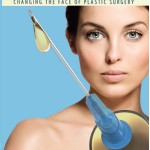
So even though the injection of the lips, for example, is commonly done and is very popular, it actually lacks formal FDA approval for doing it. (to the surprise of many patients) That is why you never see any of the injectable filler companies in their advertisements talk about that procedure or any other facial areas. That is why the most popular TV commercial for one of the injectable fillers talks only about treating ‘facial parentheses’…and never the lips. The companies know full well that lip and other facial injection procedures are being done in large numbers, otherwise known as ‘off-label’ use, but they are careful not to advertise for it which would be a direct FDA violation of what they the manufacturer are permitted to do.
Because so many other facial areas are being injected and a lot of advertising by physicians is promoting it, such expansion of injectable filler use has caught the attention of the FDA. They will be convening panel hearings about these off-label injectable filler uses in 2009. The manufacturers and physician societies, such as the American Society of Plastic Surgeons, will work closely with the FDA to look at these practices and help determine safety guidelines and any other further clinical studies that need to be done to look at their safety and effectiveness.
In the interim, injectable fillers will continue to be used for a wide variety of facial injection sites. Does this mean that they are unsafe for these uses? Absolutely not. A tremendous amount of clinical experience and evidence is available that demonstrates their safety and effectiveness. The lips, for example, are associated with a slightly higher incidence of minor complications (e.g., lumpiness, temporary nodules) but no real medical or health risks. The success of injectable fillers, and the enthusiasm for them, has merely outpaced the FDA regulatory process. The two need to get more in synch in the next year or two.
Dr. Barry Eppley
Indianapolis, Indiana


